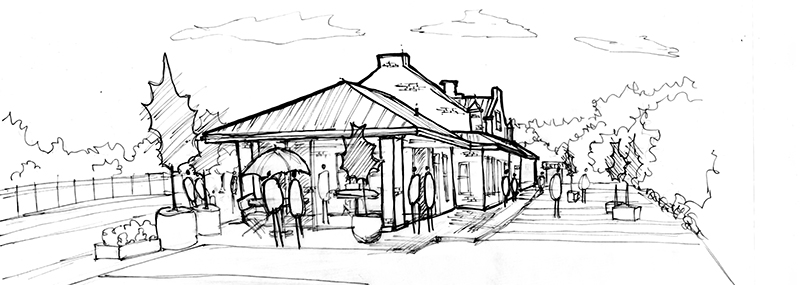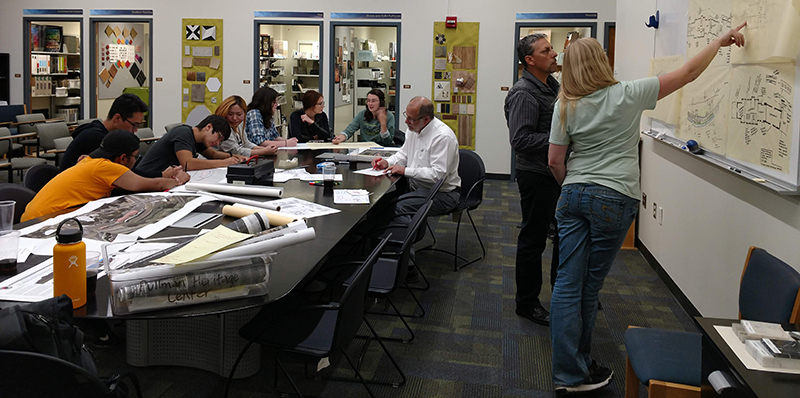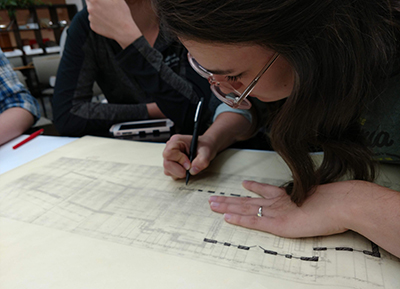Generations of students used to arrive in late summer on “Cougar Special” trains, disembarking and carrying their bags up the steep, sometimes muddy hill to begin their studies at Washington State College.
In those days, the men might have worn bowler hats or newsboy caps and suits, while women dressed in long skirts and pointed, leather boots.
Today, WSU students are helping preserve the unique past of those early days as part of a project with the Whitman County Historical Society.
As part of the Rural Community Design Initiative (RCDI), the students are working on designs for the Pullman Depot. The program is a collaborative effort between faculty and students in the School of Design and Construction and rural partners throughout the Pacific Northwest to design projects that enhance the social, cultural, economic, and natural capital of the communities.

In the late 1800s, three railroad lines met in Pullman – even though the city’s population was only 500 people. The depot was built in 1901 along Missouri Flat Creek. It was later razed and then re‑built in 1917, and trains provided passenger service to Pullman until 1970. The depot later became a real estate office and was also used for the Washington’s Department of Licensing. The historical society purchased the building earlier this year, renaming it the Pullman Depot Heritage Center.
Advised by Bob Krikac, RCDI director and an associate professor in the School of Design and Construction, and Michael Sanchez, assistant professor, the team of students began working earlier this summer with the historical society to come up with ideas for the depot, meeting with city planners as well as community stakeholders. They also toured the facilities.

Community ideas have been incorporated by students into design ideas, including for museum space, an educational center and a gift shop. The students also studied the facility site for landscaping, traffic calming measures and parking designs.
Students are helping the community to envision how the building can meet community needs before the stakeholders go to professional designers, engineers and architects.
“The students do the messy, unclear, upfront work, so that the stakeholders can be much more focused,” said Krikac. “Our work makes the future design work easier.”
Meanwhile, students are gaining invaluable, real-world experience.
“I love being able to work with community members, do sketches, and refine our layouts,” said Keyaira Mumford, a junior in interior design. “I’ve gained really valuable skills and have gotten a better idea of what it will be like to work in a real firm.”

“I’ve really enjoyed the hands‑on experience,” added Kylie Rasmussen, a junior in interior design. “It’s really different than the theoretical work in the studio — these are real clients with real goals.”
Mumford drives by the depot every day. Her grandfather, meanwhile, came to WSU on the long‑ago train. The depot, she says, really tells the story of Pullman. It’s the place where everyone arrived.
“It’s really exciting to see the possibility of it being beautified — to see that change and making it a good place for the community,” she said.
In fact, their work could stand for another 100 years and generations of future students.
“Not a lot of students get to see that happen,” said Rasmussen.






